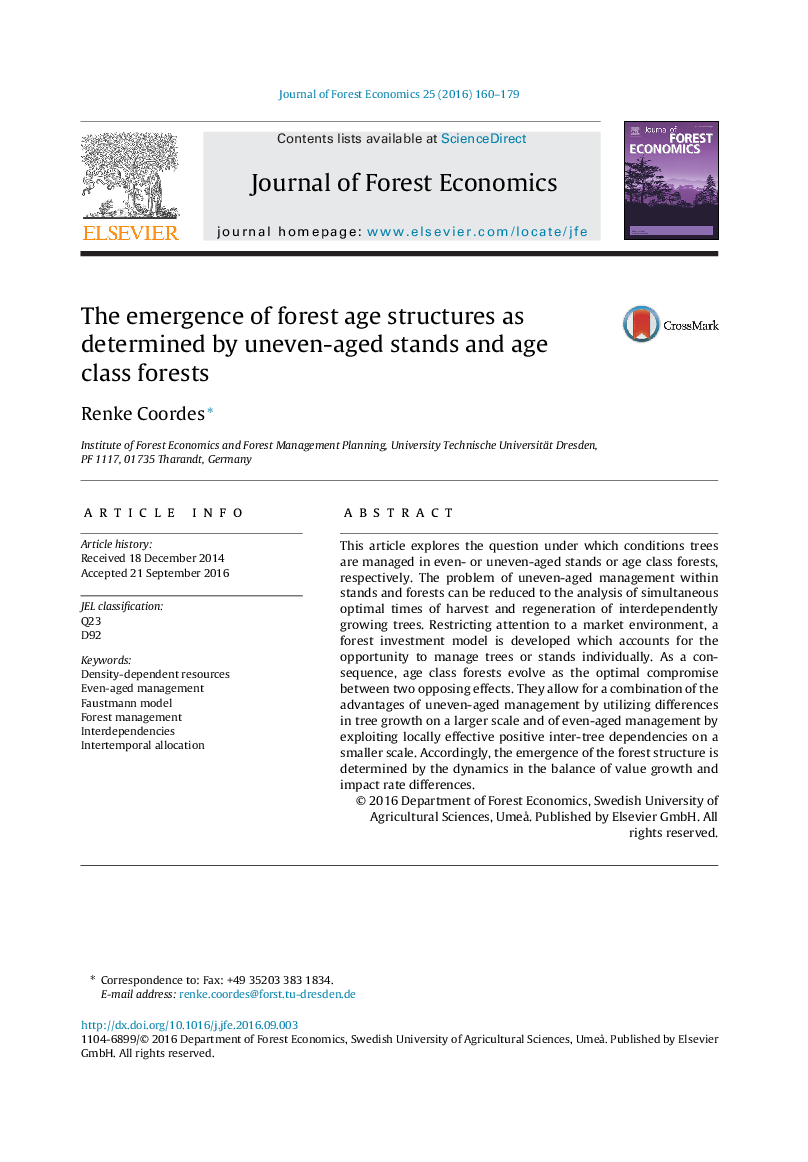| Article ID | Journal | Published Year | Pages | File Type |
|---|---|---|---|---|
| 4759848 | Journal of Forest Economics | 2016 | 20 Pages |
Abstract
This article explores the question under which conditions trees are managed in even- or uneven-aged stands or age class forests, respectively. The problem of uneven-aged management within stands and forests can be reduced to the analysis of simultaneous optimal times of harvest and regeneration of interdependently growing trees. Restricting attention to a market environment, a forest investment model is developed which accounts for the opportunity to manage trees or stands individually. As a consequence, age class forests evolve as the optimal compromise between two opposing effects. They allow for a combination of the advantages of uneven-aged management by utilizing differences in tree growth on a larger scale and of even-aged management by exploiting locally effective positive inter-tree dependencies on a smaller scale. Accordingly, the emergence of the forest structure is determined by the dynamics in the balance of value growth and impact rate differences.
Keywords
Related Topics
Life Sciences
Agricultural and Biological Sciences
Agronomy and Crop Science
Authors
Renke Coordes,
